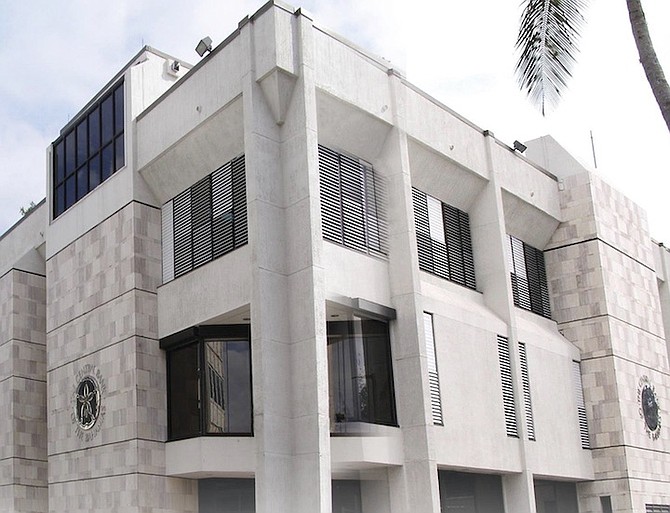By NEIL HARTNELL
Tribune Business Editor
nhartnell@tribunemedia.net
The Bahamas’ national debt fell by more than $200m during the three months to end-June 2024 as total repayments exceeded new borrowings by the Government.
The Central Bank, unveiling its economic review for the 2024 second quarter, added that the country’s debt only increased by “a muted” $3.6m over the 12 months to end-June to close the fiscal year at a total $11.653bn. The modest increase, combined with economic growth, also took The Bahamas’ debt-to-GDP ratio to a fraction below 80 percent.
Noting that the Government’s total borrowings for the first ten months of its fiscal year totalled just over $3.22bn, and were exceeded by debt repayments of some $3.754bn, the Central Bank said: “As a result of these developments, during the second quarter the direct charge on the Government decreased by $200.7m (1.7 percent) over the quarter but grew by $54.2m (0.5 percent) year-on-year to $11.314bn...
“The Government’s contingent liabilities declined by $3.7m (1.1 percent) over the review quarter, and by $50.6m (13 percent) on an annual basis, to $339m. As a consequence, the national debt, inclusive of contingent liabilities, contracted by $204.4m (1.7 percent) over the three-month period but rose by a muted $3.6m (0.03 percent) on an annual basis to $11.653bn as at end-June 2024.
“As a ratio to GDP, the direct charge decreased by an estimated 2.7 percentage points on a yearly basis to 77.6 percent at end-June. In addition, the national debt-to-GDP ratio declined to an estimated 79.9 percent compared to 83 percent in the second quarter of 2023.” Contingent liabilities represent debt whose repayment the Government has guaranteed on behalf of state-owned enterprises.
Elsewhere, the Central Bank said commercial banking industry profits for the first three months of 2024 collectively increased by a total $9.2m to almost $117m thanks mainly to increases in non-interest (fees and commissions) income and reduced expenses associated with delinquent loans.
“During the first quarter of 2024, the latest period for which data is available, banks’ net income rose by $9.2m (8.5 percent) to $116.8m vis-à-vis the same period of 2023, due largely to gains in non-interest income and lessened bad debt expenses,” the banking regulator said.
“The net interest margin edged up by $0.5m (0.4 percent) to $149.1m attributed to a $1m (0.6 percent) increase in interest income, which outweighed the $0.4m (4.7 percent) rise in interest expense. Further, interest from commission and foreign exchange fees grew by $0.6m (4 percent), contributing to a $1.2m (0.7 percent) growth in the gross earnings margin to $165.2m.
“An analysis of profitability ratios also showed overall gains. As a percentage of average assets, the gross earnings margin narrowed by 20 basis points to 5.45 percent as the interest margin fell by the same magnitude to 4.92 percent, while the commission and foreign exchange income ratio moved lower by one basis point to 0.53 percent,” the Central Bank added.
“Further, banks’ net earnings margin decreased by 20 basis points to 1.48 percent, although the operating costs ratio stabilised at 3.97 percent. However, after allowing decreased contribution from other income sources, net of depreciation and bad debt expenses, the net income ratio widened by 14 basis points to 3.86 percent.
“As it pertains to non-interest expense, banks’ operating outlays moved higher by $5m (4.4 percent) to $120.4m. Specifically, non-staff related operating costs - including professional and rental expenses - rose by $4.6m (6.4 percent) to $77.2m. Similarly, staff costs increased by $1.8m (4.6 percent) to $41.1m,” the regulator continued.
“However, occupancy costs fell by $1.4m (40.4 percent) to $2m. Further, banks’ other net earnings on their ‘non-core’ activities moved higher by $13m (22.1 percent) to $72m, as provisions for bad debt fell by $5.6m to $9.3m. Meanwhile, non-interest earnings grew by $8.7m (14.4 percent) to $68.9m, and depreciation costs by $1.2m (24.8 percent) to $6.2m.”





Comments
Use the comment form below to begin a discussion about this content.
Sign in to comment
OpenID